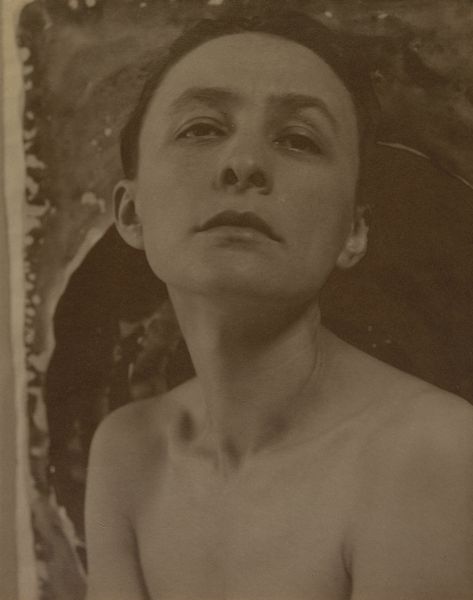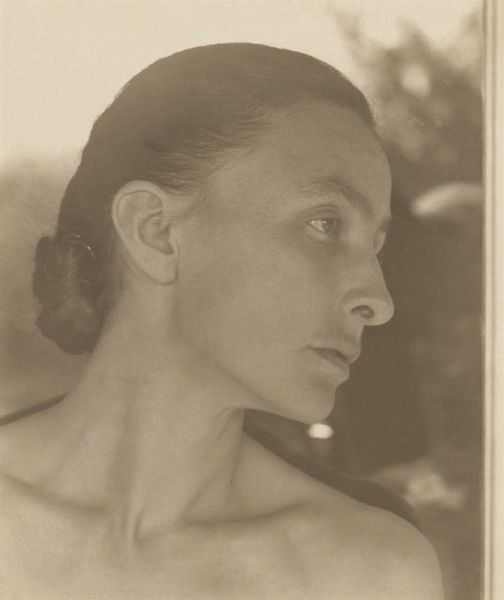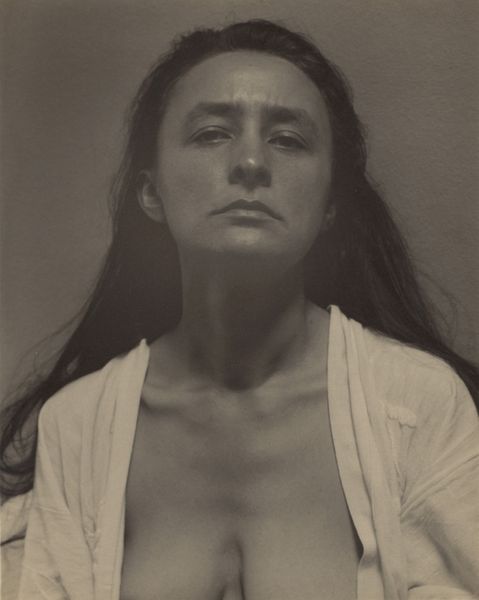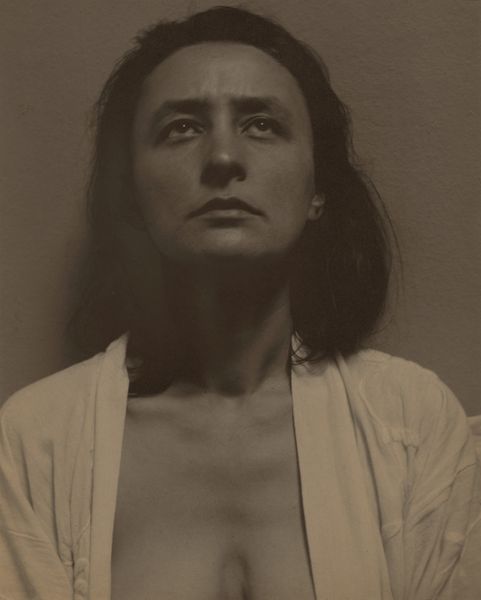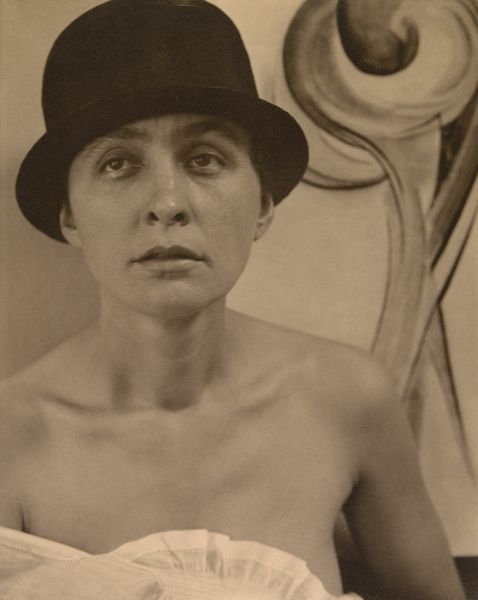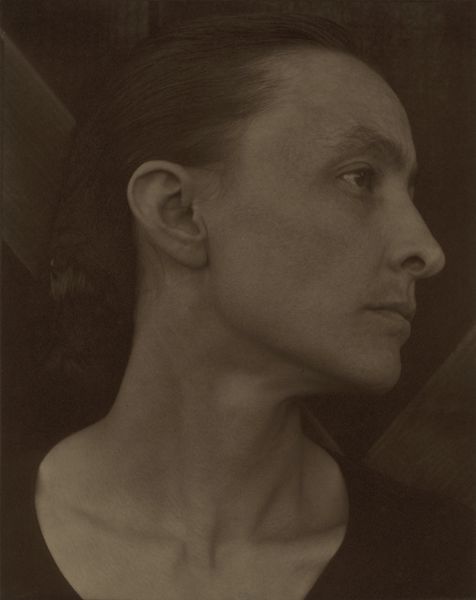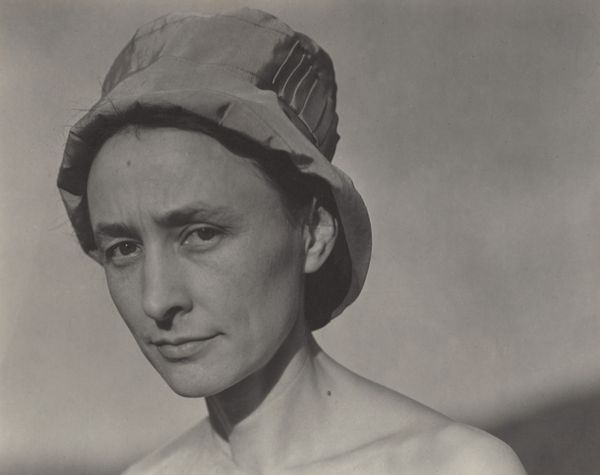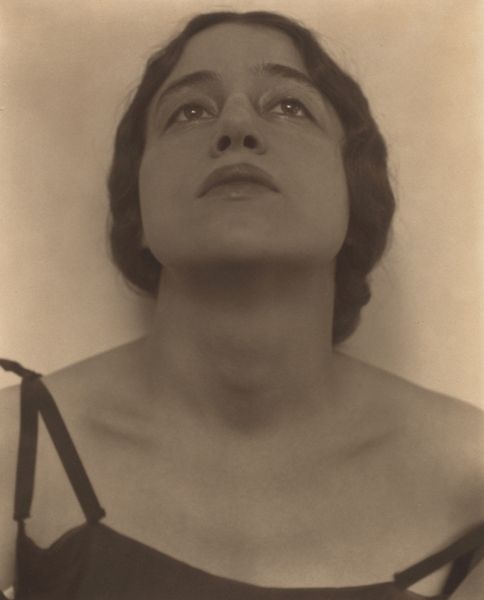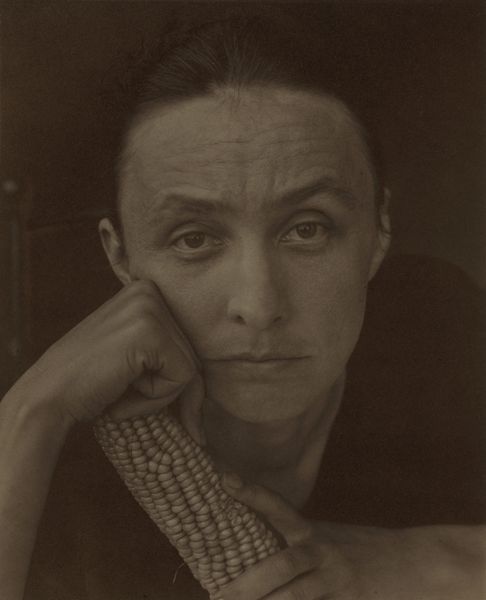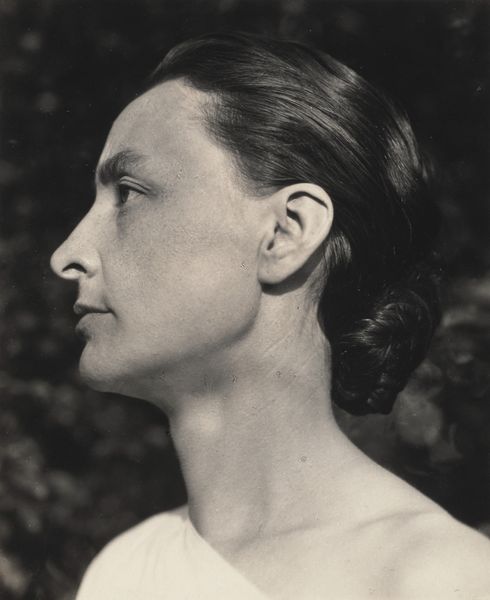
#
low key portrait
#
portrait image
#
portrait
#
portrait subject
#
portrait reference
#
single portrait
#
portrait drawing
#
portrait art
#
fine art portrait
#
celebrity portrait
Dimensions: image: 9.4 x 12.1 cm (3 11/16 x 4 3/4 in.) sheet: 10.1 x 12.5 cm (4 x 4 15/16 in.)
Copyright: National Gallery of Art: CC0 1.0
Curator: Here we have Paul Strand's 1931 photograph, "Rebecca, New Mexico." It is a striking portrait in black and white. Editor: She looks melancholic, almost stoic. The sharp contrast gives her face such depth. Curator: Indeed. Strand was deeply engaged with the socio-political landscape, especially how the artistic community could address notions of truth and identity in a changing America. He spent time photographing people and places in New Mexico in the early 30's, focusing on a return to realism. Editor: The texture of the adobe wall behind her and the rough-hewn timber she leans against also speaks volumes. They're simple, almost primitive, yet they resonate with a timeless quality. The wood itself looks like a tree of life symbol in her immediate background. Curator: That connects with Strand's interest in capturing what he viewed as authentic American lives, away from urban industrialization. New Mexico represented that. These were images he thought countered prevailing sentimentalized views of rural life. Editor: And yet there is a deliberate simplicity here. The composition focuses our attention entirely on her face and the emotion there, despite those very textured surroundings. It reminds me of early Renaissance portraits with their almost stark backgrounds and figures depicted to carry messages about strength and morality. Her gaze upward symbolizes something about transcending reality. Curator: I find the interplay of textures interesting from the point of view of photographic printing traditions as well, thinking about how Stieglitz championed Strand’s work and that circle of artists, whose impact continues to shape photographic exhibitions in our museums today. The image operates within those traditions but represents, through his subject and his own stated aims, an almost radical new visual vernacular. Editor: It makes one think about who we choose to memorialize through portraits and why. Even a 'simple' photograph carries layers of history and intention. Curator: Absolutely. It highlights the complex ways artists interact with and shape cultural memory. Editor: An encounter with this one leaves you feeling deeply thoughtful long after you have walked away from it.
Comments
No comments
Be the first to comment and join the conversation on the ultimate creative platform.
